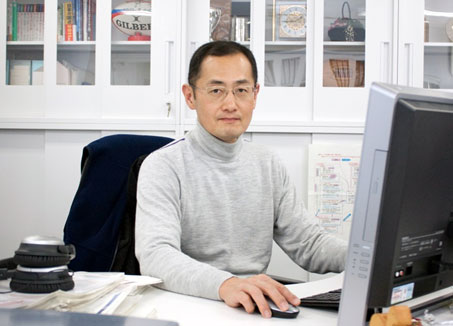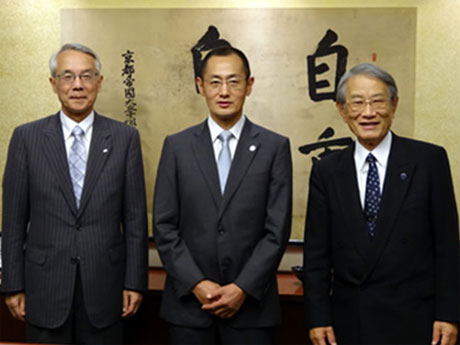News
The Nobel Prize and Japan - Part 2 Updated in November 2020
21st-Century Candidates Tend to Receive Prizes Faster than Before
Without groundbreaking achievements, a researcher cannot hope to win a Nobel Prize. However, the reputation of the Nobel is threatened if potentially prize-winning research is afterwards found to be fallacious. Thus, the more groundbreaking the result, the more carefully the selection committee will scrutinize it. Before World War II, there was an instance where a candidate got awarded for a false result. This incident will be introduced later in the series.
Some laureates’ award-winning achievements took place decades before being recognized with a Nobel. Likewise, many awardees are only recognized in old age, because their achievements took years to be adequately verified. In an interview with a member of the Nobel Prize Selection Committee, one member said, “I always feel the pressure that mistakes cannot be tolerated.”
While it often takes time to vet and verify academic accomplishments, there have been cases in the 21st century where committee screening time has been considerably shortened. This is thanks to accelerated research methods made possible by computerization. In the past, the only place to announce research results was in printed academic publications, but now results are announced on the internet, and quickly shared all over the world. Time zones and regional differences are no longer barriers.
A typical case is that of Dr. Shinya Yamanaka, a professor at Kyoto University, who won the 2012 Nobel Prize in Physiology or Medicine.

The Key to Regenerative Medicine
Dr. Yamanaka artificially created cells that can differentiate and regenerate into any tissue or organ. He named it the iPS cell. Fertilized eggs are such cells. A fertilized egg takes almost 10 months to transform into a human in the mother's womb.
A cell divides into two, then four, then eight…eventually forming each human tissue and organ. Genes (DNA) are the blueprints. For example, the heart, liver, skin, teeth, ribs, and reproductive organs are all formed based on information inside the genes.
In cases of serious disease or injury, for example if one’s liver deteriorated severely or if one’s ribs were broken badly, conventional treatment was limited. However, Dr. Yamanaka’s discovery made it possible to completely cure such ailments by re-creating the affected organs. This is called regenerative medicine. Regeneration can occur just by activating the gene that builds up organs or tissues. With the invention of iPS cells, this kind of dream-like treatment is potentially accessible to us.
Until now, such regeneration could not have occurred without the use of human genes, which entailed ethical issues. Advances in science must not neglect the dignity of each individual.
If iPS cells are used, all organs can be reproduced. If damaged organs are replaced, many diseases will be stopped in their tracks. It was an invention that paved the way for dream cures. Dr. Yamanaka amazed the world by announcing this revolutionary achievement—six years later, he won the Nobel Prize, amazing the world yet again.
Dr. Yamanaka won the prize because his accomplishments were trailblazing and his methods were scientifically rigorous. Additional tests were conducted all over the world to confirm his results. The Nobel Prize Selection Committee considered the impact that his achievement contributed to the welfare of humankind, as well as how it has paved the way for regenerative medicine.
The timespan from when a scientific breakthrough is announced until the actual granting of the prize has been shrinking during the 21st century. The two 2006 laureates for physiology or medicine, Dr. Andrew Fire, (Professor, Stanford University) and Dr. Craig Mello (Professor, the University of Massachusetts Medical School) illustrate this trend well.
They were recognized for their research on RNA interference. They impressed the world by becoming laureates only eight years after their accomplishments were publicized. Dr. Yamanaka slightly outperformed even this record by winning a Nobel just six years after his results on iPS cells were first published.
In recent years, the same pattern has been observed with the Nobel Prize in Physics. In 2010, the Russian-born professors of physics at the University of Manchester, Dr. Andre Geim, and Dr. Konstantin Novoselov, received the Nobel Prize in Physics for the invention of graphene, a strong material that is just one atom thick. For this achievement, they became laureates six years after their discovery.
In physics, it does not take much time because the achievement can be confirmed by experiment. We can say that the pace of granting the award got expedited in the 21st century.
Elevating Academic Capabilities by Experiencing Various Research Hubs
Most Nobel laureates will pursue their careers while working at three or four institutes. In particular, there are many cases where researchers study abroad or become postdoctoral fellows to advance their careers.
Dr. Yamanaka, who discovered the iPS cell, graduated from Kobe University School of Medicine, and obtained his doctorate from Osaka City University Graduate School of Medicine. He then studied outside Japan at the University of California, San Francisco in the United States. After returning to Japan, he became a research associate at Osaka City University. Following that, he assumed the position of associate professor at the Nara Institute of Science and Technology (NAIST). He later became a professor at NAIST, as well as at Kyoto University’s Institute for Frontier Life and Medical Sciences.
The way he elevated his research status by transferring to different universities and institutes resemble his counterparts in the United States. Japan's old-fashioned research culture did not tolerate much mobility. Graduates of former imperial universities would typically stay at one institute until retirement. Such stable academic careers used to be valued in Japan.
However, pre-war Japanese Nobel candidates also had a habit of studying abroad. At that time, Japan was still a developing country, and the overall domestic academic level was low for achieving Nobel-level achievements. Ambitious researchers took it upon themselves to travel overseas and develop their capabilities.
Consequently, it seems like the Nobel Prize will not come one’s way unless personal abilities and academic environment strike a good match.

From left: Dr. Michiharu Nakamura, President of the Japan Science and Technology Agency (at the time), Dr. Shinya Yamanaka, and Dr. Hiroshi Matsumoto, President of Kyoto University (at the time)
Original article by Rensei Baba, Science Journalist
Translated by the SSC Secretariat







